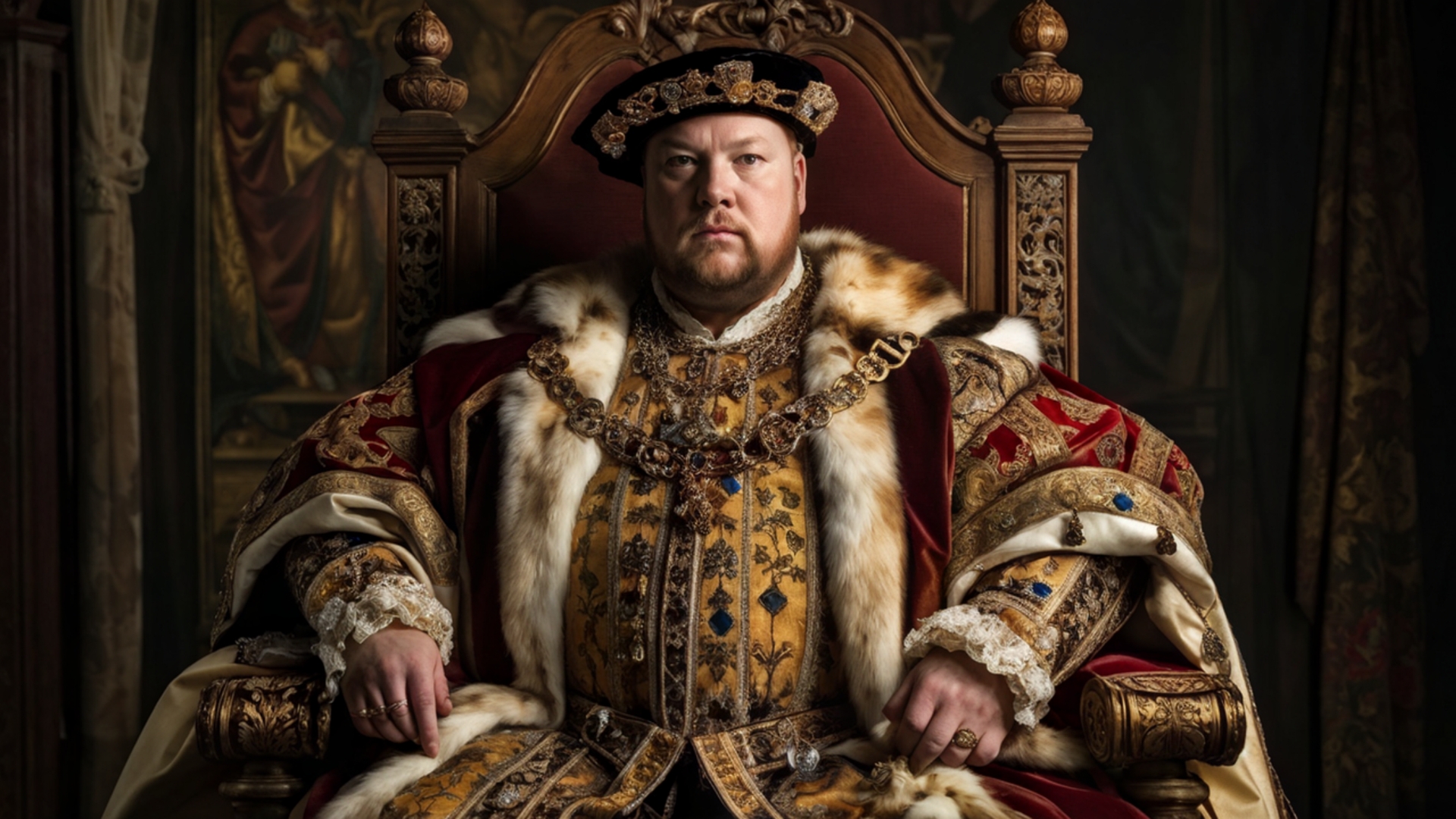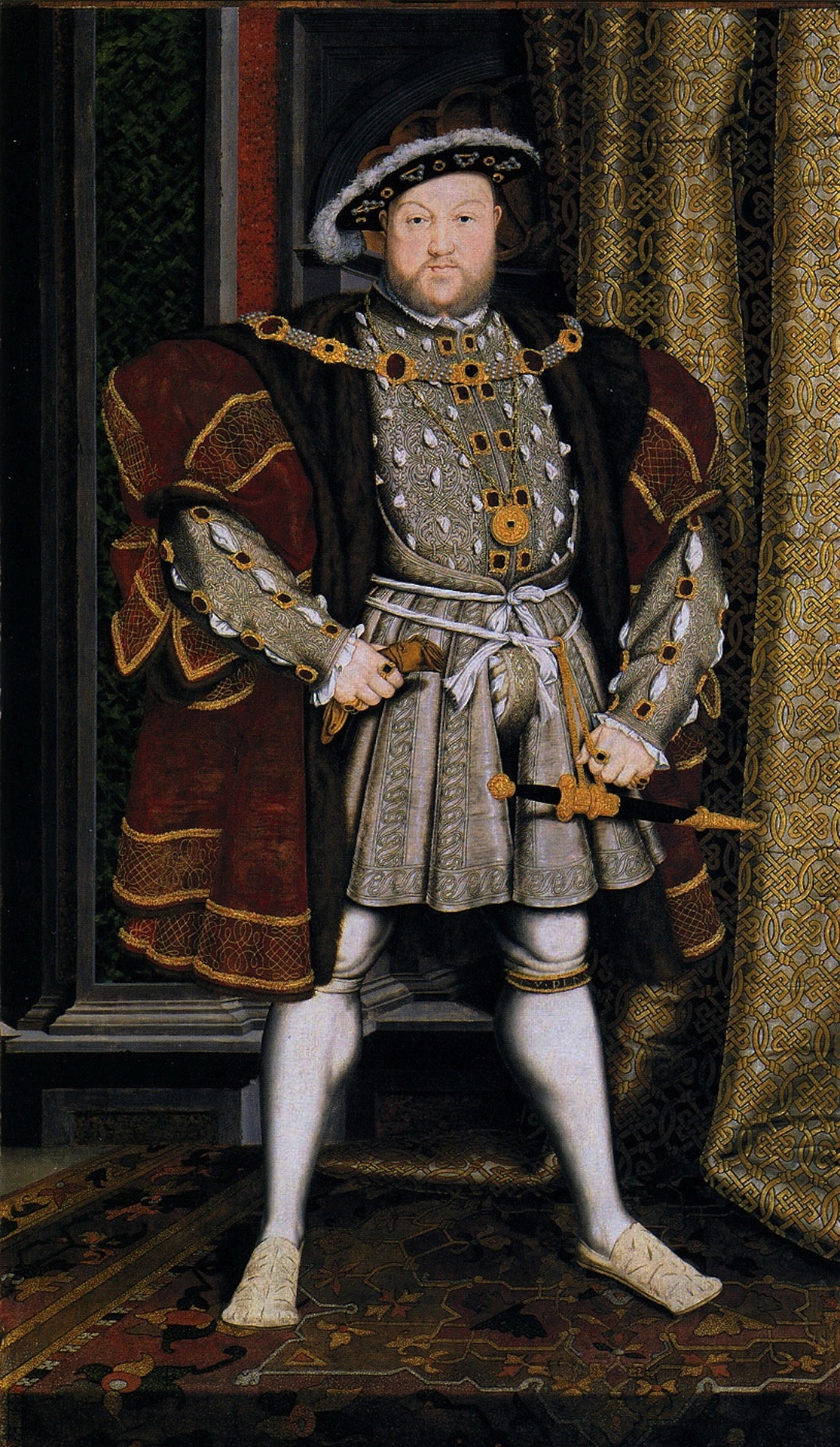
A Regal Beginning
On a sun-drenched June morning in 1509, London burst into celebration as seventeen-year-old Henry Tudor proceeded toward his destiny. The coronation of Henry VIII would set the stage for one of history's most consequential reigns, though none witnessing the spectacle could have imagined how profoundly this brash young king would transform England.
A Day of Majesty and Tradition
Henry was never meant to wear the crown. As the second son, his future had been in the Church until his brother Arthur's unexpected death in 1502 changed everything. When Henry VII died on April 21, 1509, the vibrant teenager inherited a kingdom weary of his father's miserly and suspicious rule.
The procession to Westminster Abbey was a truly spectacular sight. Henry VIII rode on a magnificent horse, dressed in splendid robes and adorned with jewels. The procession included nobles, clergy and dignitaries, all dressed in their finest attire. The streets were lined with cheering crowds, eager to catch a glimpse of their new king. The procession reached Westminster Abbey, an architectural marvel that still echoes today with centuries of royal tradition. Inside the abbey, sunlight filtered through the stained glass, casting kaleidoscopic patterns on the carved stone walls. The solemnity of the moment stood in stark contrast to the revelry outside.

The Queen’s Radiant Presence
Beside Henry stood Catherine of Aragon, his bride and queen consort. Two weeks before his coronation, Henry had married Catherine— who was his brother's widow—in a private ceremony. The Spanish princess, six years his senior, had endured years of uncertainty after Arthur's death. Now she would become Queen of England after all—a title that would later exact a tremendous personal cost. Her presence symbolised the union of England and Spain, strengthening diplomatic ties between the two kingdoms.
The Crowning Moment
The most sacred moment of the Coronation came during the anointing. Clad in rich robes of crimson and ermine, Henry knelt before the altar. The Archbishop of Canterbury performed the sacred rituals, anointing Henry’s head and hands with holy oil. This ritual transformed him from mortal to the Lord's Anointed, God's representative on earth. As the choir's voices soared, witnesses reported tears streaming down faces throughout the congregation. When St. Edward's Crown was finally placed upon his head, trumpets blared, and the assembly erupted with such force that legend claims birds flying overhead fell stunned to the ground.
Festivities Beyond the Abbey
The coronation did not end with the sacred ceremony; it burst forth into days of jubilant feasting and celebration. Lavish banquets were held at Westminster Hall, where tables groaned under the weight of roast swan and venison and elaborate sugar sculptures crafted to awe the guests. Jugglers, musicians and poets entertained the revellers, while barrels of ale and fine wine flowed freely.

One delightful anecdote from the festivities involves a peasant who, swept up by the surging crowd, stumbled into Westminster Hall and found himself feasting alongside the aristocracy. Such moments illustrated the rare blending of social classes during occasions of royal celebration, when the line between commoner and noble seemed, if only temporarily, to blur.
Immortalising the Coronation
For those fortunate enough to experience the coronation of Henry VIII, it was a spectacle like no other; a day that would be recounted for generations. The merry streets of London, the solemnity of Westminster Abbey and the spirited celebrations captured the essence of a moment when England stood on the cusp of transformation.
As the bells of Westminster Abbey tolled and the cheers of the crowd echoed across the Thames, a new era for the Tudor dynasty began - one destined to leave an indelible mark on English history.



